As an electric car driver, have you ever been “ICEd”? In the automotive world, the acronym ICE is used to refer to internal combustion engines, and now this verb “to ICE” refers to the practice of drivers parking their ICE cars in spaces that come with an EV charger and are therefore really intended for electric cars. The gasoline car driver is essentially depriving an EV driver of access to a much-needed space with a charger.
This is one example of new words arising to describe new forms of poor driving etiquette. After all, as the adoption of battery electric cars and plug-in hybrid models continues to rise, we are more and more entering a time where the automotive space is becoming a distinct dichotomy between electric and ICE vehicles. It seems likely that one day we will have a dominance of the former, but during this transition, what can we do about this need for proper etiquette?
In today’s blog, we want to talk about another point of etiquette, but this time it’s focused entirely on EV drivers. What we’re talking about is the controversial practice of unplugging someone else’s car on charge so that you can plug your own in.
Background: What’s the Problem?
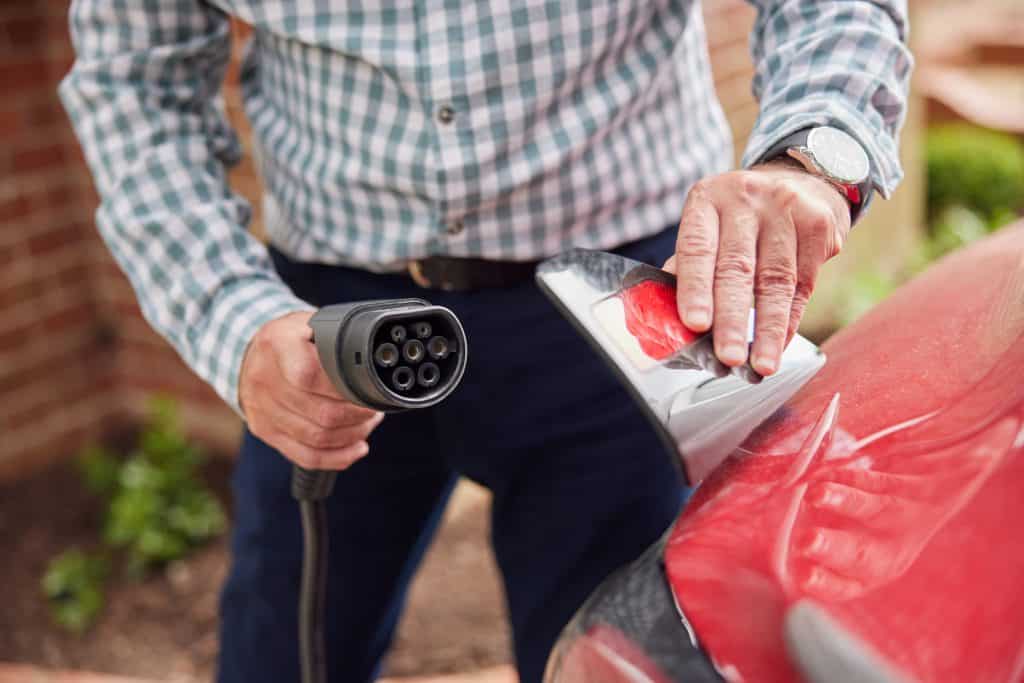
As if being ICEd wasn’t bad enough. Imagine coming back to your car thinking it was charging, only to find that some fellow EV driver has unplugged your car and taken the cord for themselves. You expected you’d be back to 80 percent, but you see you’re actually still on 38 percent because someone else has unilaterally decided that their own charging needs are far greater than your own.
Why Are People Doing This?
There’s a few reasons why people might do this, and a couple of reasons are (sort of) understandable!
- The primary reason for the behavior is the fact that there are increasingly not enough level 2 public charging stations to go around. Some people who have a home charging solution, and who drive a car with 200+ miles of range, don’t worry about charging during the day as they can get their car back exactly where they want it to be by charging at home (more cheaply) overnight.
- On top of that, there are some who feel justified in unplugging others because they are in urgent need, and assume for one reason or another that the other person has “had their turn” on the charger, and so now it’s alright to unplug them. This way of thinking isn’t unlike the “20-minute rule” that some gyms operate to stop members from hogging certain popular machines.
- In some cases, those who are knowledgeable about different types of EVs may know for a fact that another person’s car is fully charged, and so also feel comfortable unplugging to use the charger for themselves. The car may have an indicator light on the exterior, for instance, that changes color when the charge is complete. Alternatively, the charger itself might indicate that the charging cycle is complete on its own screen.
- Finally, of course, people are doing this because it’s not technically illegal. There is some quibbling around the world as to whether unplugging someone else from an EV charger constitutes some kind of criminal interference with their private property, but as things stand at the time of writing, no current law covers this specific circumstance.
After all, the charging cable and connector is not part of the other person’s vehicle, so you aren’t removing anything that belongs to someone else.
It remains a frustrating and controversial issue for a lot of people who consider the act of unplugging another car at best a bit of poor etiquette, and at worst an act of vandalism.
But is there really a way to prevent people from doing it? Could you put a polite note in your back window asking people not to? Could you let them know on the note that if there is a certain color light they should feel free to unplug? Will any of it even work if people are willing to unplug regardless?
How to Prevent Others From Unplugging You
Next, let’s take a look at some ways that you can prevent others from creating tension by unplugging you in the first place.
Buy a Tesla or VW ID.4
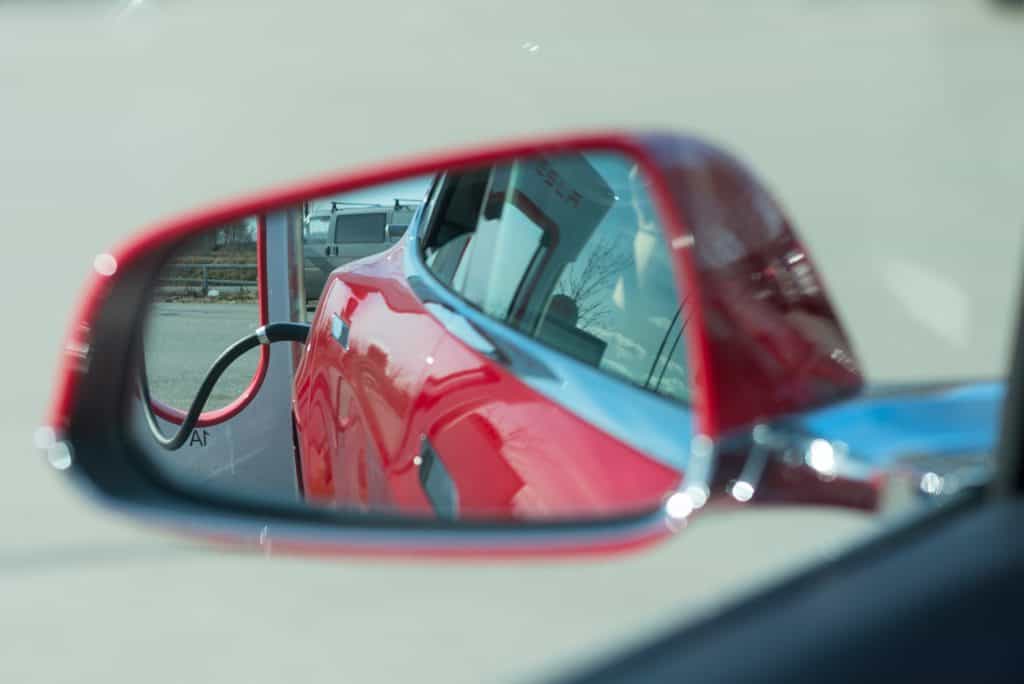
We admit, this piece of advice isn’t the most helpful, but it seems that two models that have cracked the security needs best are Tesla models, and the Volkswagen ID family. These models can actually lock the charger in place to prevent anyone from removing it. It will stay stubbornly in the charging point until you release it yourself.
There are exceptions in both cases, however. Tesla’s are only fully secure when using a Tesla charging site. When the owner has to use a J1772 adapter on a public charger from a provider like ChargePoint, for example, then the cable can be removed, leaving the adapter in place and your charge port door hopelessly flapping up and down as it tries over and over to close over the protruding adapter.
Some solutions to this problem have emerged, however, such as this lock invented by Mark Dickinson in the US:
While many were impressed, they did wonder how you could remove it, so Dickinson made a second video explaining that! He also acknowledges that other similar products do exist to help.
For the ID.4, if the owner plugs in improperly or there is an error that occurs, then the lock won’t come into effect and people can remove the plug. This type of error is indicated by either an alternating red/green light, or a red light around the charging port.
Tie the Charging Cable Under Your Wheel
There are some who take a more defensive step of tying a charge cable around their back tire in such a way that makes it impossible for others to use the charging cable, even if they do remove it from your charging port.
The idea is to deter would-be unpluggers, but of course it’s not a fool-proof system. Some people unplug for the sheer fun of it, which is incredibly irritating, but others might unplug before they realize what you’ve done, and then leave it unplugged out of pure bloody-mindedness.
This can work as a method to prevent unplugging, but it doesn’t send a good message, nor does it positively promote good etiquette between EV drivers, who in reality should be united against the scourge of ICErs stealing their spaces!
Leave a Note or Time Indication
Those without automatic locking or unlocking features can help others better identify your willingness to let others unplug if you leave a note or other clear indication of at time at which it is alright for others to unplug your vehicle.
Let’s say you plug in at 10am and you know you’ll have enough charge by 1pm, but you’ve no way to come back to this spot to move the car. Leave a note or time indicator saying that after 1pm, it’s okay to remove the cable and charge away. This is a neat solution that promotes good etiquette both ways.
Check Your Display Settings
Some cars will also indicate on the instrument panel or infotainment screen that charging is complete, but it might not be there by default. Go into your charging and/or display settings and ensure that you have that set up and showing. It’s a helpful and highly visible sign that shows you are charged enough and others can take the cable as needed.
Move Your Car
Another good way to avoid unpleasantness with others is to know when your car will be done charging and take steps to move it away from the charger and free up the space for others to use.
Is There a Way to See If a Charging EV is “Done”?
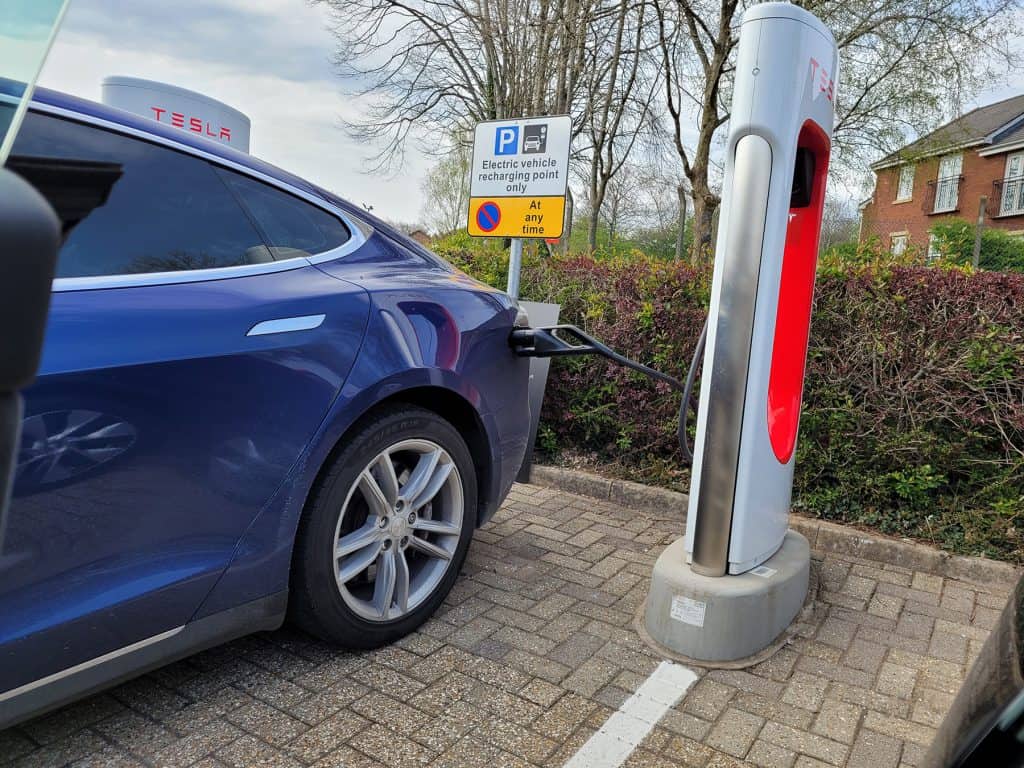
When you consider the fact that some public charging providers actually charge users who continue to be plugged in after their car has finished charging, it stands to reason that many would actually be glad for a helpful citizen to come along with a greater need and help them unplug from the charging station. The question remains, however, on how we can tell that charging is finished:
Check the Charging Device
Some charging stations offer functions that indicate when the attached vehicle is already at its charging goal, either full or a predetermined charging level like 80 percent. If you can see clearly on the device screen that the car is done charging, you shouldn’t feel bad about unplugging that other person and using the charger yourself.
Indeed, as we mentioned before, the other person might well be grateful that you’ve saved them a bunch of cash in excess charges.
If you’re not sure about the status of other cars, and the charging station you are attending is staffed, you could always ask a member of the team there if they have any insight into this particular car, or if there is some way to tell if the car in question is fully charged. They may well have a key bit of knowledge that you don’t. It doesn’t do any harm to ask, if you can.
Look For an Indicator Light or Screen Reading
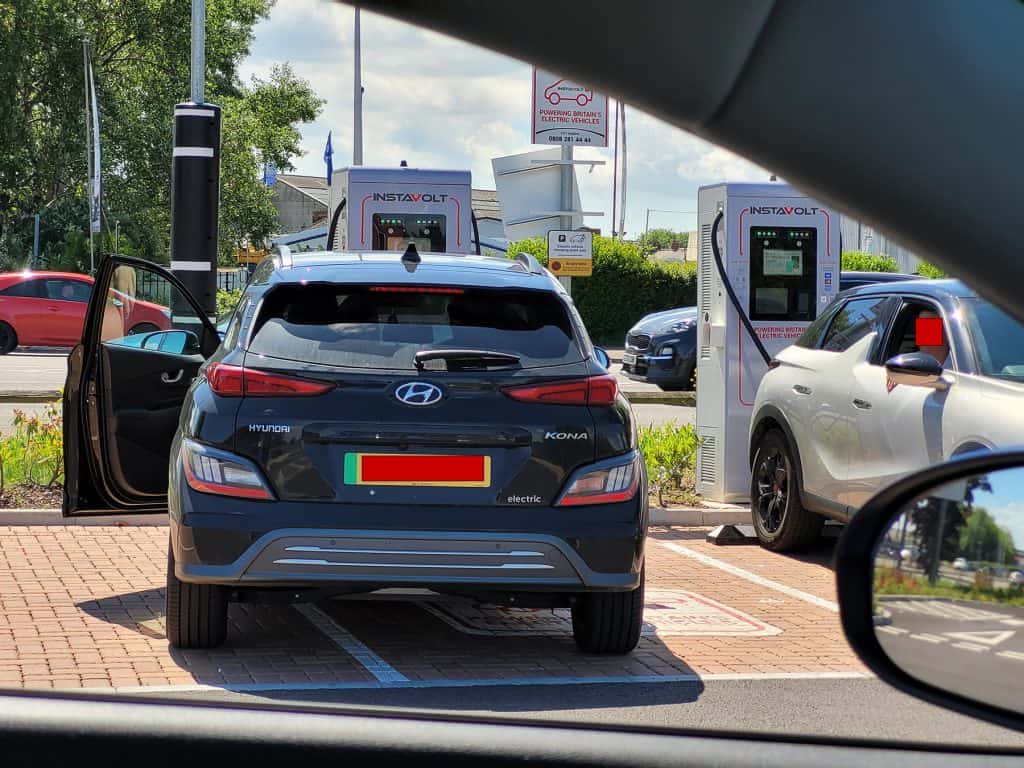
If the charger itself doesn’t tell you, then there are often indicator lights that will show how charged the other car is. Some are more helpful than others. Two of the most helpful are the Nissan Leaf and Tesla systems.
Nissan Leaf
When the car in question is a Nissan Leaf, take a look through the windshield at the dash and look for the three flashing charge indicator lights. You might see three light positions, but only one of them flashing, this means the car is still in a low state of charge. If one is solid, and the second flashes, then it’s about half charged up, and if all three lights are solid, then it’s fully charged.
Tesla
Tesla is an interesting example because the only way you can actually unplug one at all is by catching one at a non-Tesla charging point when it’s using the J1772 adapter, as we touched on earlier. How would you know if it’s okay to do so? Tesla uses a green pulsing light around the charge port to show that the car is still charging. The slower that pulse is, the closer the car is to being fully charged.
So if the flashing green is fairly fast and frequent, you shouldn’t, but if it’s pulsing very slowly, or has turned solid green, then it’s ready and charged up. However, you create a further problem when you unplug a Tesla using a J1772 adapter.
The charging cable will detach, but the adapter will stay locked in the port, which creates a problem for the driver because the charging port door will repeatedly attempt to close over the stuck adapter. Therefore, we still suggest not unplugging Teslas unless it’s a really dire emergency.
Chevrolet Bolt
Similar to the Nissan Leaf, the Chevrolet Bolt uses a dash-mounted flashing green indicator light to show that the car is charging. It will turn steady when the car is fully charged. Some Chevy Bolt users have installed modifications on their charge port, however, to make it much clearer to other users about their car’s charging status. We found a great example in the YouTube video below:
Volkswagen ID.4
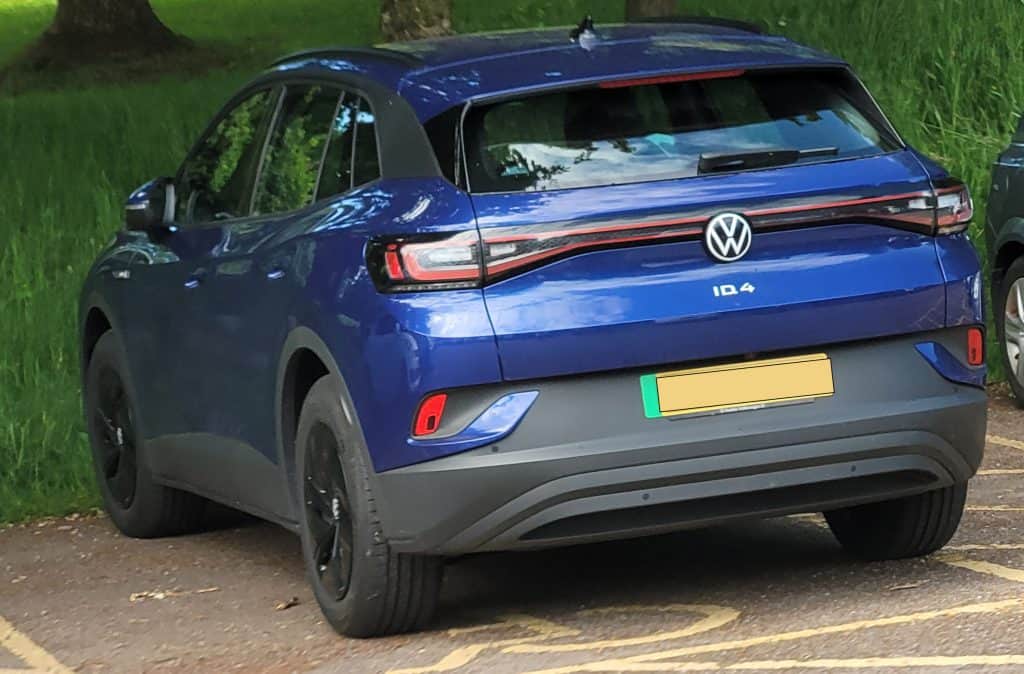
The owner’s manual of the VW ID.4 tells us that if you see a green pulsing light, it means the ID.4 is charging. If it is a steady green light, then the ID.4 has completed charging. If you see an alternating green/red light, then it means there is a malfunction and it could be that the charging connector is not fully locked in place. In this situation, they’re not charging anyway, and it’s not secured, so you can remove it.
They might never know about the error, but at least you know you didn’t deprive someone of their charge. They should have been checking their smartphone app anyway to ensure that charging was going ahead successfully.
Kia Niro
The Kia Niro EV model makes use of a very helpful feature in this area, which locks the cable in place while it’s charging, but then unlocks it when the charging is complete. So, if you’re parked next to a Niro EV, you can try the charger yourself and see if it comes away. If it does, the car was charged anyway and you needn’t feel bad. If you can’t, then you can’t.
So… Is It Ever Okay To Unplug An EV That Is Fully Charged?
Since there’s currently a lack of public charging infrastructure, it can sometimes be considered okay to unplug someone else’s electric car – but only if you’re certain they are 100% charged up. Even then, you should aim to be polite and (at least) leave a note to the owner whose EV you unplugged.
That doesn’t mean that the owner will be absolutely cool with it, though. As EVs become more mainstream, I think that there’ll be an increase in “EV rage” – where people become irate that ‘their’ charging cable was unplugged, and seek out revenge.
Whether that’s letting the air out of tires, keyed-paintwork or worse, I won’t personally unplug other people’s EVs unless it’s practically an emergency. But that’s just me – I now of other people who do this somewhat regularly and haven’t had any issues.
Nonetheless, let’s cover some alternative tips that should help you avoid the need to unplug other people’s cars.
Better Charging Tips
Charge At Home or Work As Much As Possible
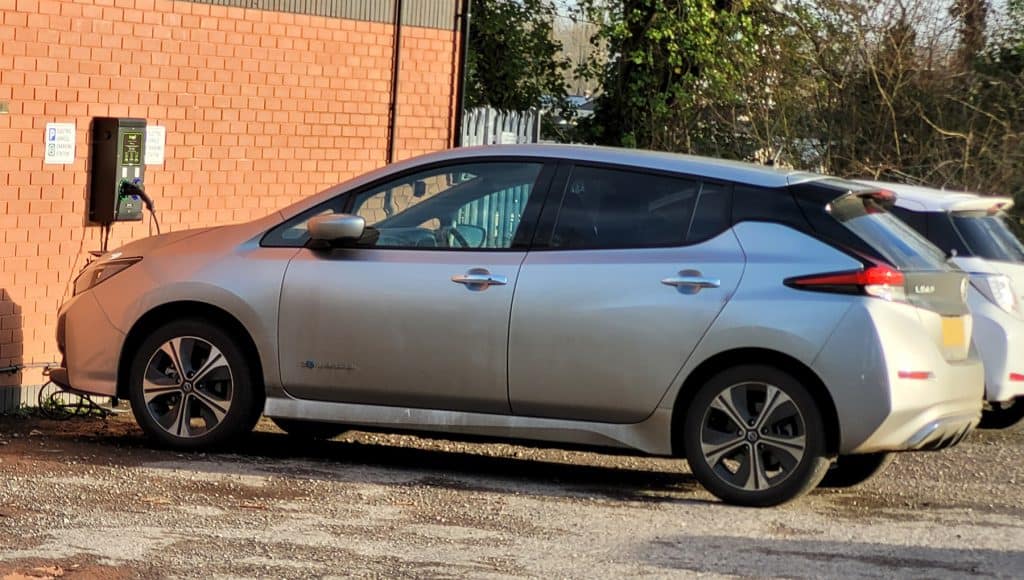
If you have a roomy driveway or garage, but haven’t yet invested in a level 2 home charging solution, then consider doing so. The more people that do, the fewer there will be relying on the shortening supply of public charging points. Some people don’t get one because they seem expensive, but you might be able to get credit for one from your car manufacturer, or your city or county government might be running a scheme in which they help pay for them.
Similarly, if your workplace has parking and charging stations, make use of those rather than other public ones, even if it’s slightly inconvenient on some days to do so. You have unique access to those charging points, so not only is the risk of unplugging much lower, but you’re not taking up spaces that other people without the same access need.
Be More “Chill” In Your Daily Driving
You can conserve a great deal of battery power and range if you adopt steadier, smoother driving habits instead of slamming on the accelerator and brakes everywhere you go. You might love that instant torque, but you’re draining your battery faster than you need. Make use of coasting and regenerative braking as much as possible, too, to help eliminate your need to depend on public charging stations so much.
Don’t Plug In Your PHEV
Finally, if you drive a plug-in hybrid, it would be a lot nicer if you left the public charging stations to those who needed them most. PHEV vehicles can be partially recharged by their internal combustion engines, and only need to be plugged in to get back to full electric charge and range.
You can do that at home even on level 1 slow charge because the batteries are smaller, and you can still get your electric range back overnight on level 1 after about 4-5 hours of charging time.